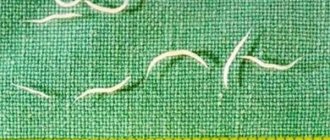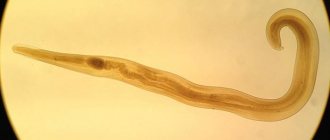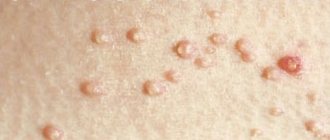Adults get scarlet fever - this may be a surprising statement for many, since the majority of the population is convinced that scarlet fever is exclusively a childhood disease. Can adults get scarlet fever from a child?
Adults with weakened immune systems may develop scarlet fever if they come into contact with a sick child. In adults, the symptoms of the disease most often are somewhat blurred in nature, and manifest themselves only as moderate catarrhal inflammation of the throat, slight intoxication and a pale, short-lived rash.
However, there are cases of extremely severe scarlet fever in adults, the treatment of which was delayed or incorrect, since the true diagnosis of the infectious disease is established late.
Ways of contracting scarlet fever
In 1675, the English physician Thomas Sydenham determined that scarlet fever is an independent disease. In 1882, the German bacteriologist Johann Loeffler, after examining the mucous membranes of the pharynx and blood of people who died from scarlet fever, established that it was streptococcus that provokes the development of scarlet fever.
There are several ways of infection:
- Since the disease is transmitted by airborne droplets, the most common cause of infection is a sick person or a carrier of the bacteria.
- Often, infection with streptococcus occurs when eating food products that have bacteria on the surface (sour cream, milk, cottage cheese).
- The causative agent of scarlet fever can enter the body not only through airborne droplets, but also through open wounds or the surface of a burn.
- And the rarest case is transmission of infection through personal belongings.
What it is?
Scarlet fever is a typical infectious disease characterized by general symptoms of intoxication and the presence of a specific skin rash. The cause is the bacterium Streptococcus pyogenus. There are several varieties of this microbe. Group A streptococcus causes not only scarlet fever, but is also the cause of sore throat, rheumatism, inflammation of the kidneys and joints, erysipelas, and pustular skin diseases.
The streptococcus bacterium in appearance resembles a chain of spherical structures. A distinctive feature of the causative agent of scarlet fever is the ability to produce a toxic substance that negatively affects blood vessels and red blood cells. The immune system, trying to fight the toxin, sometimes shows aggression against its own organs and tissues. Scarlet fever is often followed by heart, kidney and joint diseases.
Scarlet fever is widespread, but is mainly found in countries with temperate and cold climates. The rise in incidence traditionally occurs in the autumn-winter period. In addition, scientists have noted not only seasonal, but also long-term fluctuations. The last episode of decline in incidence occurred at the beginning of the 2000s, after which another gradual rise was again recorded.
Causes of scarlet fever
Infection can occur when two factors coincide:
- Presence of a source of infection.
- Weakened body defense system.
Scarlet fever in adults, the symptoms and treatment of which depend on the severity of the disease, occurs in people with reduced immunity.
The reasons for weakening the body are:
- frequent acute and chronic diseases;
- excessive physical stress on a person;
- immunodeficiency syndrome (AIDS)
- vitamin deficiency and deficiency;
- hypothermia of the body;
- frequent chronic infectious bacterial diseases (sore throat, ARVI, influenza), tuberculosis, cancer;
- drinking alcohol and smoking;
- lack of sleep.
People who did not have scarlet fever in childhood have an increased chance of developing the disease.
The disease is seasonal - winter, spring, autumn. It is explained by a lack of vitamin and the growth of respiratory viral and infectious diseases during these time periods.
Forms of scarlet fever in adults
The disease was once considered dangerous and had a high mortality rate. But with improved living standards and the advent of antibiotics, the situation with scarlet fever has changed.
Scarlet fever in adults, the symptoms and treatment of which depend on the type of disease, can occur either typically or atypically. The atypical course of the disease is characterized by the absence of the main symptom—a rash.
The typical form is divided into three degrees of severity:
- light form;
- moderate form;
- severe form.
Prognosis for the course of the disease
Modern medications successfully cure thousands of patients around the world from various types of streptococcal infections. The same applies to scarlet fever, especially in cases where an adult patient promptly seeks help from a doctor.
According to statistics, ninety-five percent of all patients with scarlet fever can count on a favorable prognosis. And only in five percent of cases are complications possible. Relapse of the disease occurs in only two percent of all cases.
Symptoms of scarlet fever in adults
The incubation period for the development of the disease in an adult lasts from 2 days to 1 week. Scarlet fever begins suddenly, usually with a severe headache.
The first symptoms of the disease:
- Strong headache;
- general health worsens - drowsiness, lethargy, chills appear;
- there is a sharp rise in body temperature;
- develops a characteristic bright pink rash on the face and body;
- red cheeks against a background of a pale nasolabial triangle;
- lightheadedness and vomiting often appear;
- the lymph nodes become denser and become painful;
- tonsils become inflamed;
- the tongue becomes covered with a gray-brown coating.
Prevention
The most important preventive steps that an adult can take are to strengthen their own immunity and keep it normal.
You also need to constantly update your clothes to be clean and fresh. It is recommended not to have contact with patients and not to be in the same room as a patient with this disease.
During an outbreak or when you are near someone who is sick, you can use gauze to protect your mouth and nose. It is recommended to avoid public events, wash your hands with soap after coming from the street, and also rinse your nose with sea salt. This will reduce the likelihood of getting scarlet fever.
Signs of various forms of scarlet fever
Scarlet fever in adults can occur in typical or atypical forms and have different symptoms, on which treatment depends.
3 forms of typical scarlet fever
Typical scarlet fever in adults is divided into degrees of severity.
Light form
A mild form of the disease occurs in 65% of patients and is manifested by mild symptoms:
- headaches are mild;
- the temperature rarely rises above 38.5°C
- no nausea and vomiting;
- angina proceeds without complications;
- the oral cavity acquires a bright red color (“flaming throat”);
- the surface of the tongue is granular;
- the tonsils are slightly swollen, but there are no ulcers on them;
- skin rashes either do not appear or are mild;
- peeling of the skin during the recovery stage is moderate.
With a mild course of scarlet fever and correctly prescribed treatment, the patient’s condition returns to normal on the 5th or 7th day: on the third day, signs of fever and poisoning of the body with bacterial decay products disappear, then the rash and sore throat disappear. The surface of the tongue is restored within 10 days from the moment of illness.
Moderate form
Occurs in 1/3 of patients with scarlet fever.
Symptoms of the disease appear in the full spectrum:
- temperature rises to 39-40 °C;
- severe headaches;
- decreased appetite, frequent bouts of vomiting;
- a characteristic plaque may appear on the tonsils;
- tachycardia appears;
- high fever can cause hallucinations and delusions.
With scarlet fever, which occurs in a moderate form, recovery occurs 7-8 days from the moment of illness: the temperature returns to normal, the primary symptoms of the disease disappear.
Severe form
Severe scarlet fever in adults is rare, but due to the complex course of the disease, it requires immediate hospitalization.
There are 3 types of severe disease: toxic, septic and mixed (toxic-septic):
| Type | Peculiarities | Manifestations |
| 1. Severe toxic form | Caused by severe intoxication (poisoning) of the body with waste products of streptococcus. The disease manifests itself suddenly - the temperature rises sharply to 40-41°C, and proceeds violently. | depression or vice versa, strong agitation, delirium, the appearance of hallucinations; convulsions are possible; vomiting continues for 2-3 days; cardiopalmus; blood pressure drops; The rash characteristic of scarlet fever spreads throughout the body. |
| 2. Severe septic form | It is extremely rare and is characterized by the development of purulent inflammation of the entire nasopharynx. The disease may begin as moderate and not cause concern. But after 2-4 days the temperature rises to 40-41°C and the patient’s condition deteriorates sharply. | lymph nodes in the neck become denser and increase in size, painful sensations appear; The pulse increases - a sign of “scarlastic heart”. |
| 3. Toxic-septic form (mixed) | Extremely heavy and dangerous. It may begin in a toxic form, and after 3-5 days signs of a septic form will appear. | Manifests itself in accordance with toxic and septic forms simultaneously |
Atypical forms of scarlet fever
Atypical forms are divided into 3 types and make up 9.3% of the total number of existing forms: erased, hypertoxic and hemorrhagic, extrabuccal forms.
Erased (rudimentary) forms
The rudimentary form is characterized by a shortened incubation period (up to a day). In this group, the disease occurs with a complete absence of symptoms or with minor manifestations of the disease.
Patients of this type are very dangerous.
Hypertoxic and hemorrhagic forms
Diseases of these forms are violent and difficult. Symptoms of meningoencephalitis often appear - convulsions, loss of consciousness
Extrabuccal forms
Wound or burn (extrabuccal) forms - infection occurs when an infection enters the wound. The disease is mild - the incubation period is 1-2 days. A small rash around the site of infection is typical; a sore throat does not appear or is mild.
Periods
Scarlet fever occurs in several stages: the incubation period is replaced by a full picture of the disease, and then recovery begins or complications appear.
The first signs of the disease are detected after the end of latent carriage (during the incubation period, people feel healthy), fever suddenly begins and the tonsils become enlarged, and a rash is discovered on the first or second day from the onset of the disease. And after 4-7 days it disappears.
If the periodization of the disease is quite clear, then its course may be different:
1. Light . It is characterized by moderate intoxication and indicators of fever, inflammatory changes in the tonsils, not a profuse and not bright pinpoint rash (the height of the disease takes no more than 1-3 days).
Sore throat (photo)
The reverse development of the infection begins after 5-7 days. There are no complications.
2. Average . The signs of the disease are well expressed, symptoms of increased capillary fragility are observed (Pastia, Rumpel-Leeda and Konchalovsky), the hyperemia of the rash is strong, the nasolabial triangle turns white (Filatov’s symptom).
What does scarlet fever look like in children: photo
The duration of the disease has been increased - the main phase lasts 5-7 days, recovery takes up to 20 days. There are also complications.
3. Heavy . Clinical manifestations can last more than two weeks, with high body temperature, 39 and above (up to 7 days), frequent bright red (or bluish) maculopapular rash, subcutaneous hemorrhages, necrotic changes in the tonsils, a long period of rehabilitation (up to a month) .
Diagnosis of scarlet fever
Scarlet fever in adults, the symptoms and treatment of which depend entirely on the correct diagnosis, is determined through a medical examination and laboratory testing.
During a visual examination, an infectious disease doctor identifies specific symptoms of the disease:
- the throat is characteristically colored - “flaming throat”;
- the tongue is crimson in color, its surface is granular;
- the presence of a characteristic rash;
- The nasolabial area of the face is pale and not affected by the rash.
Laboratory examination methods:
- a complete blood count and a blood test for antistreptolysin detect streptococcal infection;
- a smear from the mucous surface of the pharynx and a bacterial culture confirm the presence of the infectious agent;
- electrocardiography is a study of the cardiovascular system.
Laboratory testing is necessary to accurately diagnose scarlet fever in adults. There are a number of diseases with similar symptoms, but their treatment can be radically different.
Why is the scarlet fever pathogen so aggressive?
The bacterium ensures its survival inside humans by producing biologically active and aggressive substances.
- Synthesized O-streptolysins and S-toxins destroy blood cells by making holes in their membrane.
- The enzyme cysteine protease counteracts immune defenses.
- The production of hyaluronidase causes cells to clump together so that it is easier for infections to pass from one cell to another.
- DNase dilutes the intercellular fluid, increasing the speed of movement of the scarlet fever pathogen.
- Streptokinase dissolves blood clots that could cause congestion and interfere with movement.
- Several proteases assist in tissue dissolution, promoting maximum inflammatory coverage.
- The cell wall M protein prevents blood phagocytes from swallowing the microbe for digestion.
An examination at the Medicine 24/7 clinic will dot all the i's, for this there is everything necessary: the most modern diagnostic equipment, the ability to perform complex tests, including genetic and morphological, universal infectious disease doctors who have completed internships in leading medical centers
What diseases can scarlet fever be confused with?
At the initial stage of the disease, it is easy to confuse scarlet fever with a number of diseases with similar symptoms: fever, rash, headache, catarrhal changes, intoxication.
Similar diseases:
- measles;
- rubella;
- food allergies;
- drug dermatitis;
- toxicoderma;
- ARVI;
- lacunar tonsillitis;
- adenoviral infection;
- Infectious mononucleosis;
- pseudotuberculosis;
- meningitis.
Scarlet fever in adults has symptoms similar to meningitis.
But the treatment for these diseases is different. The speed of a patient’s recovery directly depends on the correct diagnosis and the prescription of treatment appropriate to the disease.
Diagnosis
Recognizing Scarlet Fever in its typical course is not difficult. With erased forms, epidemiological anamnesis is of great importance. For diagnosis, isolation of group A hemolytic streptococcus from the throat of a patient is unconvincing. In the blood from the first days there is an increase in leukocytes to 10,000-30,000 per 1 μl, an increase in the number of neutrophils to 60-70% or more, a nuclear shift of neutrophils to the left to young forms, and in severe cases - to myelocytes. From the 3rd day of illness, the content of eosinophils increases, sometimes reaching 15-20%. ROE, especially in severe forms, accelerates to 20-50 mm per hour. Currently, due to the predominance of mild forms of S., blood changes are weakly expressed or completely absent.
Differential diagnosis is carried out with measles, rubella, Far Eastern scarlet-like fever, staphylococcal infection, and drug rashes.
Measles (see) differs from S. by the presence of an initial period, pronounced catarrhal phenomena, enanthema and Velsky-Filatov-Koplik spots on the oral mucosa, the nature of the rash (maculopapular on an unchanged background), the staged nature of the rash and the tendency for the elements of the rash to merge .
With rubella (see), unlike S., the rash is localized mainly on the torso and extensor surfaces of the extremities. There is no sore throat. There is swelling of the occipital, lateral cervical and other lymph nodes, in the blood - leukopenia, neutropenia, plasma cells.
Staphylococcal infection (see), accompanied by a scarlet-like rash, is very similar to S.. In this case, there is a purulent focus (osteomyelitis, phlegmon, panaritium, etc.)” and there is no sore throat.
Far Eastern scarlet-like fever (see Pseudotuberculosis) affects mainly adults. There is no true sore throat, there is hyperemia of the mucous membrane of the pharynx with unchanged tonsils, bradycardia, pain in the joints and muscles of the extremities, and gastrointestinal tract. disorders, and sometimes sharp pain in the right iliac region (mesenteric adenitis), the rash often becomes hemorrhagic in nature; the diagnosis is clarified using agglutination reactions (see), indirect hemagglutination (see), immunofluorescence (see).
A rash due to drug allergies (see), which occurs after taking sulfonamides, antibiotics and other drugs, is sometimes similar to scarlet fever, but does not have the typical localization for S.. Sore throat, regional cervical lymphadenitis and other symptoms typical of S., as well as basic hematol. there are no shifts. The history often indicates previous skin reactions to the same drug.
Mental disorders in S. should be differentiated from mental illnesses that manifest themselves or are aggravated by infection, as well as organic diseases of the brain, for example, neurorheumatism (see Rheumatism).
Treatment of scarlet fever in adults with drugs
Mild scarlet fever can be cured without hospitalization. In moderate and severe forms, patients are admitted to a hospital. To prevent the development of complications, comprehensive treatment is carried out.
During home and hospital treatment, a person suffering from scarlet fever is provided with rest and isolation from healthy people, and is prescribed bed rest for 5-6 days.
To eliminate the possibility of re-infection, hospital rooms should be filled within 1-2 days. The capacity of the rooms is no more than 2-3 people. Contact with patients from other wards is not allowed.
The basis of therapeutic treatment for adults are antibiotics, to which the scarlet fever pathogen is sensitive. Penicillin-based drugs are considered the most effective. In some cases, macrolide drugs (erythromycin) and 1st generation cephalosporins (Cefazolin) are used.
Penicillin group drugs recommended for use:
- Amoxicillin;
- Azithromycin;
- Erythromycin;
- Clarithromycin;
- Penicillin;
- Cephalosporin;
- Clindamycin.
In addition to the penicillin group, a number of drugs are used in the treatment of scarlet fever:
- If the patient’s condition sharply worsens and a toxic form of scarlet fever begins to develop in an adult, the administration of scarlet fever serum is immediately prescribed to detoxify the body.
- To intoxicate the body, take the drugs Enterosgel, Albumin.
- To suppress attacks of nausea and vomiting, Cerucal and Motilium help.
- To relieve itching accompanying the rash, antihistamines are prescribed: Tavegil, Cetrin, Zyrtec.
- Inflammatory processes in the throat are relieved by antiseptics: Hexoral, Stop Angin, lozenges.
- To reduce the temperature, paracetamol-containing drugs are prescribed.
- After antibiotic treatment, mandatory intake of probiotics and prebiotics to restore intestinal microflora (Bifidumbacterin, Linex, Hilak Forte).
- To maintain and strengthen the immune system, vitamin complexes are prescribed, which contain vitamins B and C.
The course of treatment is 5-7 days for mild and moderate forms, and from 7 to 14 days for severe forms of the disease. Note! Antibiotics must be taken for the full course, even if there are no symptoms of scarlet fever. For a successful recovery, patients with scarlet fever must not only take medications, but also follow a drinking regime.
Etiology
Scarlet fever is caused by toxigenic and virulent hemolytic streptococci of group A (see Streptococci). For many years, the etiology of Scarlet Fever has been the subject of debate. Back in 1900, Baginsky and Sommerfeld (A. Baginsky, P. Sommerfeld) established the frequent presence of streptococcus in the pharynx of patients with scarlet fever. In 1905, I. G. Savchenko discovered streptococcal scarlet fever erythrogenic toxin, and he prepared an antitoxic serum that gives a therapeutic effect. In 1906, G. N. Gabrichevsky showed that when a streptococcal vaccine containing a toxin was administered to children for immunization, they experienced scarlet fever - phenomena similar to the symptoms of the primary period of scarlet fever.
The streptococcal theory of the etiology of Scarlet Fever was confirmed by the studies of the Dick spouses (GF Dick, G. N. Dick, 1938), who established, during an attempt at immunization, that large doses of erythrogenic toxin produced by scarlet fever streptococci in persons who did not have Scarlet Fever cause symptoms characteristic of the primary period Scarlet fever. When small doses of the toxin are administered intradermally, a local inflammatory reaction (Dick reaction) occurs. If there is immunity to S., the Dick reaction is negative, since the toxin is neutralized by specific antibodies.
An obstacle to recognizing streptococcus as the causative agent of S. was the fact that in a number of other diseases of streptococcal etiology, the same types of streptococcus are isolated as in S., and the toxins obtained from these cultures do not differ in their properties. The viral etiology of S. was assumed, but was refuted by virological and immunological studies.
New evidence of the streptococcal theory of S.'s occurrence was obtained as a result of numerous epidemiological, microbiol. and immunol. studies conducted for S. and other diseases of streptococcal etiology, as well as in the process of studying the properties of the erythrogenic toxin and the mechanism of its action. It was found that group A streptococci are, as a rule, found in the pharynx of patients with S. at the onset of the disease; contamination of the throat with streptococcus in patients with S. is hundreds of times greater than in healthy carriers; Streptococcal antigens are constantly detected in the blood and urine of patients with S., which disappear when treated with penicillin; after suffering from S., as a rule, there is an increase in antibodies to streptococcal antigens and enzymes. There is a parallelism between the spread of S. and streptococcal infection in the throat of children in children's groups.
The uniqueness of S. in comparison with other streptococcal infections is explained by the fact that with S. toxicosis develops, caused by an erythrogenic toxin. Proof of this is the occurrence in some cases of scarlatinoids with the introduction of highly purified preparations of erythrogenic toxin for the purpose of immunization, the appearance of symptoms and morphol. changes characteristic of S. in rabbits that react to the toxin when large doses of toxin are administered intravenously, as well as a higher level of toxigenicity of streptococci isolated from patients with S. In addition, with S. there is a high sensitivity to erythrogenic toxin at the onset of the disease; with tonsillitis and other diseases of streptococcal etiology, on the contrary, a high level of antitoxic immunity is noted from the very beginning.
The incidence of Scarlet fever is directly related to the degree of sensitivity to the erythrogenic toxin. As a result of the application of the titration method (Dick reaction with different doses of the toxin), it was found that the incidence is significantly higher in children who react to small doses of the toxin (x/10 skin dose), and is practically absent in individuals who do not respond to 10 skin doses. Direct evidence of the dependence of the incidence of S. on the level of antitoxic immunity is a decrease in the incidence of S. after immunization with a purified toxin. Some researchers have discovered positive skin reactions after suffering from S., which is explained by the use of an unrefined erythrogenic toxin containing an admixture of a thermostable fraction, which is an allergen. Negative Dick reactions have also been described at the onset of disease C. This phenomenon is not associated with the presence of antitoxic immunity, but depends on the lack of reactivity to the toxin that occurs during toxicosis. Relatively strong and long-lasting immunity after suffering from S. and the absence of such in other streptococcal infections do not contradict the streptococcal nature of S. It is antitoxic immunity, which is important in S., that is strong and long-lasting, while antimicrobial immunity, which plays a major role in other streptococcal infections infections, as is known, is type-specific and, due to the presence of a large number of types of streptococcus, cannot prevent the occurrence of recurrent diseases.
Infection with toxigenic streptococci does not always cause the development of S., despite the absence of antitoxic immunity. This is explained by the fact that for the occurrence of S. it is necessary not only the presence of toxigenic streptococci and the absence of antitoxic immunity, but also the absence of antimicrobial immunity to this type of streptococcus and hl. arr. high virulence of streptococcal cultures. The rationale for this position is that with S., as a rule, virulent streptococcal cultures containing M-substance are found (see Streptococci). Most isolated cultures from carriers of streptococcus, as well as from convalescents, do not contain M-substance, i.e. they are avirulent.
Treatment with folk remedies
To treat scarlet fever, along with medications, decoctions and infusions of herbs are used. But you still shouldn’t use folk remedies without a doctor’s recommendation. At the initial stage of the disease, you can rinse your throat and mouth every 1-2 hours with a 30% solution of citric acid, warm saline or soda solutions.
Fir oil has powerful disinfectant and anti-inflammatory properties. For treatment, you can drop 1-2 drops onto the tonsils, or lubricate them with a cotton swab soaked in fir oil. Carry out the procedure every 5-6 hours for 1-2 days.
It is recommended to gargle with decoctions of chamomile, sage, calendula and eucalyptus. In addition, they treat (wash) wound surfaces of the skin.
To prevent drying of the mucous membranes, burning, and the development of stomatitis, it is recommended to rinse your mouth after each meal with strong brewed tea, then lubricate it with rosehip or sea buckthorn oil.
Classification
Depending on the route of infection, two forms of scarlet fever are distinguished in adults:
- Pharyngeal - bacteria enter the body through the mucous membrane of the oropharynx;
- Extrapharyngeal - the pathogen can enter the blood through the wound surface of the skin, after which it spreads throughout the body.
The disease can occur in a standard or atypical form. The latter form includes scarlet fever with an erased or rudimentary course.
It is worth highlighting the following three forms of scarlet fever:
- Extrabuccal form. It occurs extremely rarely, as it is characterized by penetration of the pathogen through wounds. The disease has an extremely short incubation period, after which a rash begins on the skin from the site of infection and beyond. The pharynx has a healthy appearance, which distinguishes this disease from other forms.
- Erased form. Adults are more likely to experience this form of the disease. Although the main symptoms of scarlet fever are present, intoxication is mild, and skin rashes quickly disappear.
- Septic form. Unlike children, adults are more likely to have severe scarlet fever. The disease occurs abruptly and is accompanied by multiple complications. Skin rashes look like petechial hemorrhages. Kidney diseases, blood poisoning and other pathologies may develop if not treated in a timely manner.
Diet therapy
Scarlet fever in adults, the symptoms and treatment of which depend on proper diet, requires a special diet. For patients, a gentle, vegetable-dairy diet is necessary. At the first stage of the disease, it is recommended to eat warm food in liquid (pureed) form 5-6 times a day.
Such food does not irritate or injure the mucous surfaces of the mouth and larynx, thereby reducing pain when swallowing.
Recommended healthy products:
- radish, beets, cabbage, pumpkin - have an antimicrobial anti-inflammatory effect;
- low-fat fish and meat (chicken, rabbit, turkey) dishes, boiled or steamed;
- liquid porridges and purees;
- berries and fruits - vitamins and minerals;
- compotes, jelly;
- honey;
- fermented milk dishes (kefir) - prevention of dysbacteriosis.
Fried, fatty, smoked, spicy, salty foods are strictly contraindicated. It is also necessary to exclude chocolate, coffee, and carbonated drinks from the diet.
To reduce intoxication of the body and increase the rate of elimination of toxins, it is necessary to consume a large amount of liquid (2 - 2.5 liters per day): rosehip decoctions, unsweetened tea, fruit drinks, juices. As the symptoms of scarlet fever disappear and the condition improves, the patient is transferred to a general table.
Possible complications of scarlet fever
The main reason for the development of complications in the treatment of scarlet fever in adults is untimely and incorrectly prescribed treatment. To exclude serious complications, it is necessary to carefully monitor the patient and adjust treatment in a timely manner. Scarlet fever is characterized by early and late complications.
Early complications
Caused by the rapid development of infection.
These include:
- pharyngitis;
- sinusitis;
- otitis;
- purulent lymphadenitis.
In case of severe disease:
- Secondary foci of purulent inflammation are formed in the liver and kidneys.
- On the 8th-9th day of illness, a symptom of “toxic heart” may appear - an increase in the heart muscle due to relaxation and softening of the walls. At the same time, the pulse rate decreases and blood pressure drops, shortness of breath and chest pain appear.
- Damage to blood vessels leads to hemorrhages in internal organs. The most dangerous thing is a cerebral hemorrhage.
Late complications
Late complications are associated with the manifestation of allergy symptoms, or due to repeated infection (reinfection) upon contact with newly admitted patients.
Complications:
- Articular rheumatism is a consequence of streptococcal tonsillitis and manifests itself from the 14th day of the disease. It manifests itself as pain in the knee and elbow joints. The skin over the affected joint is red and hot, and the pain moves from one joint to another. Rheumatism is treated with non-steroidal anti-inflammatory drugs. The disease passes without serious consequences.
- Streptococcal glomerulonephritis (scarlet fever) - damage to the kidney glomeruli. Manifested by pain in the lumbar region, swelling. It begins with an increase in temperature and a sharp deterioration in condition. Blood pressure rises, edema appears, and the daily volume of urine sharply decreases. An acute onset is characteristic of a severe form of nephritis. Treatment lasts for 3-6 weeks, in severe cases it extends to 3 months. As a rule, during treatment, kidney function is completely restored.
- Pneumonia is inflammation of the lung tissue. Appears at 1 week with septic scarlet fever. A serious illness that requires long treatment and recovery. Antibiotics and general restoratives are prescribed for treatment.
- Relapse (reinfection) is a re-infection caused by violation of sanitary standards in the hospital.
- Myocarditis is damage to the heart muscle, myocardium. It manifests itself as chest pain, cough, swelling of the feet and eyelids, and severe fatigue. The inflammatory process leads to rupture of the myocardial muscle tissue, subsequently scars form at the rupture sites. As a result, blood circulation in the heart muscle is disrupted, which subsequently leads to heart failure. Antibiotics, non-steroidal drugs and heart nutritional drugs are prescribed for treatment. During illness and after, physical activity is prohibited.
It is important to know! Despite the fact that a person has had scarlet fever, he can serve as a source of infection for several weeks after recovery and the disappearance of signs of the disease.
FAQ
People who have directly or indirectly encountered this infectious disease almost always ask questions that are similar in semantic content and that worry them the most. We will try to give a comprehensive answer and convey to everyone useful information about such an insidious disease as scarlet fever.
Are scarlet fever vaccinations given to adults and what are they called?
There is no direct ban on vaccinating an adult against scarlet fever. Anyone, regardless of their age, can go to the manipulation room of the clinic at their place of registration and ask to be given an intramuscular injection of serum containing weak embryos of streptococcus genotype A. The vaccine will provoke the production of antibodies and the person will receive acquired immunity to the disease without the fact of the disease itself. The name of the serum depends on the manufacturer. If you want to purchase a vaccine, you can simply contact the pharmacist at the pharmacy and ask for scarlet fever serum. The specialist will offer drug options and announce their cost. To know which product to purchase at the pharmacy, it is recommended to first visit a general practitioner or infectious disease specialist and get advice from him on this matter.
How many days is the quarantine for?
The recommended duration of quarantine in an institution where an outbreak of scarlet fever occurred is 20-25 days. During this period, all those infected will go through the incubation period, become ill and acquire antibodies that destroy the streptococcal infection. Throughout the entire quarantine period in the rooms of the infected building, representatives of the sanitary service must disinfect furniture, floor coverings, and air. Patients with scarlet fever are also in isolation for a similar period of time.
Is it possible to get sick a second time?
Re-infection with scarlet fever in an adult is possible only if, with the first symptoms of the disease, he received intensive therapy with potent antibacterial drugs, which led to recovery within 3-4 days from the moment the disease was detected. It is believed that in such a short period of time the immune system does not yet have time to produce antibodies and store information about the type of bacterial pathogen, its vulnerability, and in the future it simply does not know how to resist infection.
Is scarlet fever dangerous for pregnant women?
For women carrying a child, any infection entering the body is a potential threat to the stable development of the fetus, and in some cases, streptococcus can lead to miscarriage or premature birth. Bacteria of this type have the ability to overcome the placental barrier and penetrate the body of an unformed baby. As a result, the child experiences the same painful symptoms as the mother, but only in an even more aggravated form.
The occurrence of developmental pathologies of the upper and lower extremities cannot be ruled out. A child may be born deaf, with a heart defect, or congenital kidney disease.
Can an adult become infected from a child?
Children are the same spreaders of scarlet fever as adults infected with streptococcus genotype A. An adult only needs to talk to an infected child, hug or kiss him to get the disease with all the ensuing consequences, symptoms and possible complications. Therefore, the fact of infection itself is not affected by who the source of the bacteria was - an adult or a child.
How many days is a person contagious?
It is believed that an adult is contagious the very next day from the start of the incubation period. The stage of completion of incubation and transition to the acute form of the disease is a very contagious stage of life, and after recovery the patient is still able to spread bacteria into the environment, but not in the same quantity. On average, an adult can be contagious for 20 days from the onset of the disease.
Forecast
Modern pharmacology, in most cases, makes it possible to quickly cope not only with scarlet fever, but also with other similar infectious diseases. The fatality rate is currently almost zero.
It is impossible to predict the consequences if the disease is severe and aggravated by the development of complications.
Scarlet fever in adults, identified in the first days, with correctly defined symptoms of the disease and timely treatment prescribed, does not cause complications, especially in severe forms.
Article design: Oleg Lozinsky
Immunity
Persons who have had Scarlet Fever acquire post-infectious immunity (see). There are cases of repeated diseases, which have become more frequent recently. To determine susceptibility to S., a Dick test is used, which consists of intradermal injection of a diluted streptococcal erythrogenic toxin into the forearm. The cutaneous dose of a toxin is the minimum amount that can cause skin hyperemia in an area 1 cm in diameter in a susceptible child (positive reaction). Research by V.I. Ioffe (1967) and L.I. Fix et al. (1972) revealed a frequent discrepancy between the results of the Dick test and the state of susceptibility to S., which casts doubt on the significance of this reaction as a reliable indicator of the state of immunity to S. in modern conditions.










